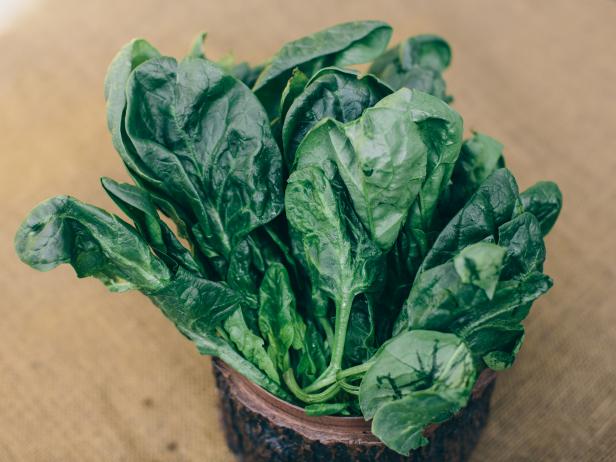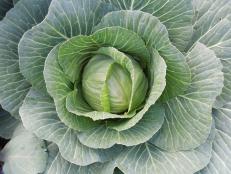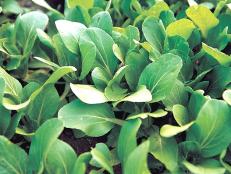How to Freeze Spinach
Freeze fresh spinach leaves—homegrown or store-bought—to create your own dark leafy green to flavor hot dishes and smoothies.

Ben Rollins
Can you freeze spinach? You definitely can, and the result serves fabulous flavor when you start with freshly picked leaves. You won’t be able to serve the thawed product in fresh salads, but frozen spinach is versatile in the kitchen. Learn how to freeze spinach, along with easy ways to use the final product.
Start with homegrown or locally raised spinach for the freshest flavor. Check with vendors who sell spinach at your local farmers’ markets. Sometimes you can arrange to buy a large quantity. You might even want to take a trip to the farm. It’s always good to see where your food comes from—especially if you have children to bring along.
The flavor of fresh frozen spinach is leagues above most offerings in the frozen section of your favorite supermarket. Spinach leaves should be young and fresh. Avoid older, tough, limp, or yellowing leaves. They’ll produce a nasty taste and rubbery texture that no one will want to eat. On average, two pounds of spinach leaves yield one quart frozen.
How to Freeze Vegetables, Fruit and More 22 Photos
Learn how to freeze vegetables, fruit, and even eggs and milk, and see how easy it is to extend the life of perishable foods.
Start the freezing process by washing spinach leaves. Triple rinsing them—dunking leaves into three separate batches of fresh water—usually removes all traces of dirt. After leaves are clean, remove stems as desired. Tear larger leaves into silver dollar-size pieces (roughly 1 to 2 inches across).
Blanch spinach leaves in boiling water or steam for two minutes, followed by soaking in ice water for the same amount of time. If you blanch leaves in boiling water, you’ll notice the water turns green. This is some of the nutrients leaching out of leaves. You can save this water and freeze it for stock or cooking grains, like rice or quinoa.
To keep as much nutrition in leaves as possible, steam blanch spinach leaves by placing them in a steamer basket that keeps leaves above the boiling water. Steam for two minutes. You don’t lose that many nutrients or minerals by blanching spinach in boiling water. Which method you use is really a matter of choice and convenience.
After removing spinach from ice water, spin it dry in a salad spinner or blot it on a thick towel. Stuff leaves into freezer bags, placing one to two cups of leaves per bag, depending on your desired portion size. Freezer burn occurs when frozen items are exposed to air, and spinach doesn’t taste well if it gets freezer burn. Try using a straw to suck out excess air around leaves before sealing bags. Place sealed bags in the freezer. Vacuum sealing systems work really well with spinach leaves.
Use frozen spinach within nine to 14 months for best quality. Add frozen spinach to soup or stock, casseroles, and stir fries. Frozen spinach also works well in dips, quiche, and pasta dishes. It brings flavorful nutrition to homemade egg rolls, meatballs, and marinara sauce.
If you know you’ll use your frozen spinach within six months, you can freeze it without blanching. This method yields more of a slimy product upon thawing. This frozen spinach works well in cooked dishes, but if you plan to use it as a stand-alone side dish, try a small batch before freezing a large portion without blanching.
Another way to freeze spinach is to puree it with water and freeze in ice cube trays. After cubes freeze solid, toss them in a freezer bag. Spinach cubes are the perfect addition to green smoothies. Or try tossing spinach cubes into sauces or stews. They also work well when cooking rice, quinoa, or barley.
How to Freeze Vegetables
Learn methods for freezing vegetables so you can have fresh taste long after the growing season ends.















































